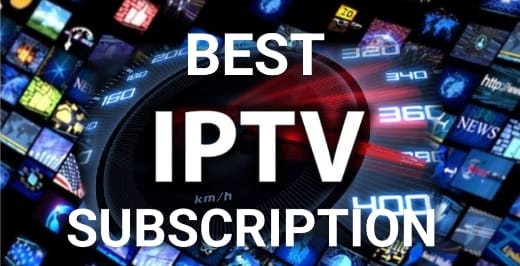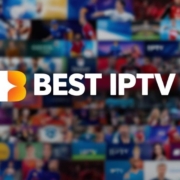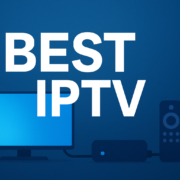IPTV: Everything You Need to Know

The way we watch television has changed dramatically. Internet Protocol Television (IPTV) is at the center of this transformation, replacing the need for cable boxes and satellite dishes by streaming channels and on-demand videos directly through an internet connection. Unlike traditional broadcasting, IPTV gives viewers greater flexibility while creating new opportunities for broadcasters, service providers, and digital media companies.
This guide explores what IPTV is, how it works, how it differs from over-the-top (OTT) platforms, and how businesses can use it to expand their content strategies.
What Is IPTV?
IPTV stands for Internet Protocol Television. Instead of receiving programming through cable or satellite signals, viewers access content via a broadband internet connection. To use it, audiences typically need:
- A high-speed internet connection.
- A Smart TV, mobile device, or set-top box.
Unlike simply uploading video files to the web, an IPTV service requires infrastructure: dedicated servers, streaming protocols, and user-friendly applications for navigation. Despite the technical setup, IPTV offers major advantages:
- Established broadcasters can expand their audience online.
- Startups can launch niche channels for targeted communities.
- Streaming companies can add live TV options to complement their on-demand libraries.
IPTV vs. OTT: Understanding the Difference
Both IPTV and OTT distribute video online, but they function differently:
1. Content Delivery
- IPTV: Built around live television channels plus some on-demand features. Examples include Sling TV or Hulu + Live TV.
- OTT: Focused on on-demand libraries. Netflix or Disney+ are typical examples.
2. Network Structure
- IPTV: Operates on managed networks, with regional servers ensuring reliable real-time streams.
- OTT: Relies on the open internet and uses standard web protocols, which makes deployment simpler but less optimized for live broadcasts.
3. Streaming Protocols
- IPTV: Uses real-time protocols designed for continuous delivery of live content.
- OTT: Uses HTTP-based protocols that download and buffer video files, making them ideal for skipping, pausing, and rewinding.
Common IPTV Formats
IPTV content usually appears in several different forms:
- Live TV – Broadcasts that stream in real time.
- Catch-up TV – Programs made available after the live showing.
- Time-shifted TV – Ability to pause, rewind, or replay live broadcasts.
- Near Video on Demand (NVoD) – Scheduled replays of the same program at different start times.
- Video on Demand (VOD) – A library of stored videos accessible at any time.
How IPTV Works
The IPTV system delivers content through a method called unicasting, where each viewer receives an individual stream. This differs from traditional broadcasting, which sends a single signal to all viewers at once.
Here’s how it comes together:
- Content Sources: Live events and recorded media are uploaded to central servers.
- Distribution: These servers transmit streams to local or regional data centers.
- Playback: Users access the streams through apps or set-top boxes, which decode the video and deliver it to their screens.
By using regional servers, IPTV minimizes buffering and ensures stable service, even for international audiences.
Leading IPTV Providers
Many major telecom and broadcast companies now offer IPTV services, often rebranding existing television products for online use. Examples include:
- DIRECTV Stream (by DIRECTV/AT&T)
- Sling TV (by Dish Network)
- Verizon Stream TV
These services often come with advanced features such as watchlists, user profiles, and personalized recommendations. However, subscription bundles remain common, requiring customers to purchase themed channel packages rather than select individual channels.
Frequently Asked Questions
When should businesses choose IPTV instead of OTT?
- IPTV is best for offering live television channels and curated packages.
- OTT is better suited for on-demand content libraries and is easier to launch.
Will IPTV replace traditional TV?
- Internet-based delivery is increasingly popular, but on-demand OTT remains the dominant model. The decline of cable and satellite subscriptions highlights the shift, but both IPTV and OTT will likely coexist.
Is IPTV available everywhere?
- Most countries support IPTV since the infrastructure overlaps with existing broadband and broadcasting systems.
Do you need special equipment?
- Smart TVs and mobile devices can connect directly. Older televisions may require a set-top box to decode and display IPTV streams.
IPTV and Modern Streaming Platforms
IPTV opens doors for broadcasters to maintain a live, channel-based viewing experience, while OTT platforms provide flexibility through on-demand access. Businesses don’t necessarily have to choose between them—many successful platforms combine both models.
Streaming providers such as Vimeo enable organizations to broadcast live events, host video libraries, and build custom streaming platforms without heavy technical investment. With options for branding, white-label apps, and global distribution, businesses can engage audiences across formats and regions.
Final Thoughts
IPTV represents a major step forward in how television content is delivered and consumed. By combining the reliability of live broadcasting with the flexibility of internet-based access, it creates new opportunities for media companies and viewers alike. Whether used alongside OTT platforms or as a standalone service, IPTV is helping to define the future of television.







Leave a Reply
Want to join the discussion?Feel free to contribute!